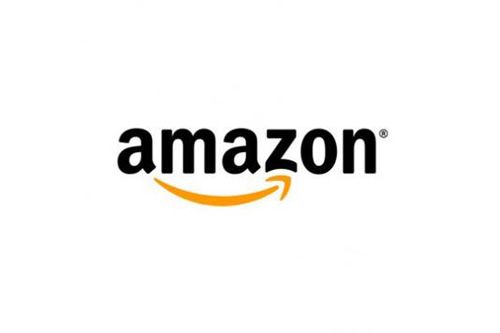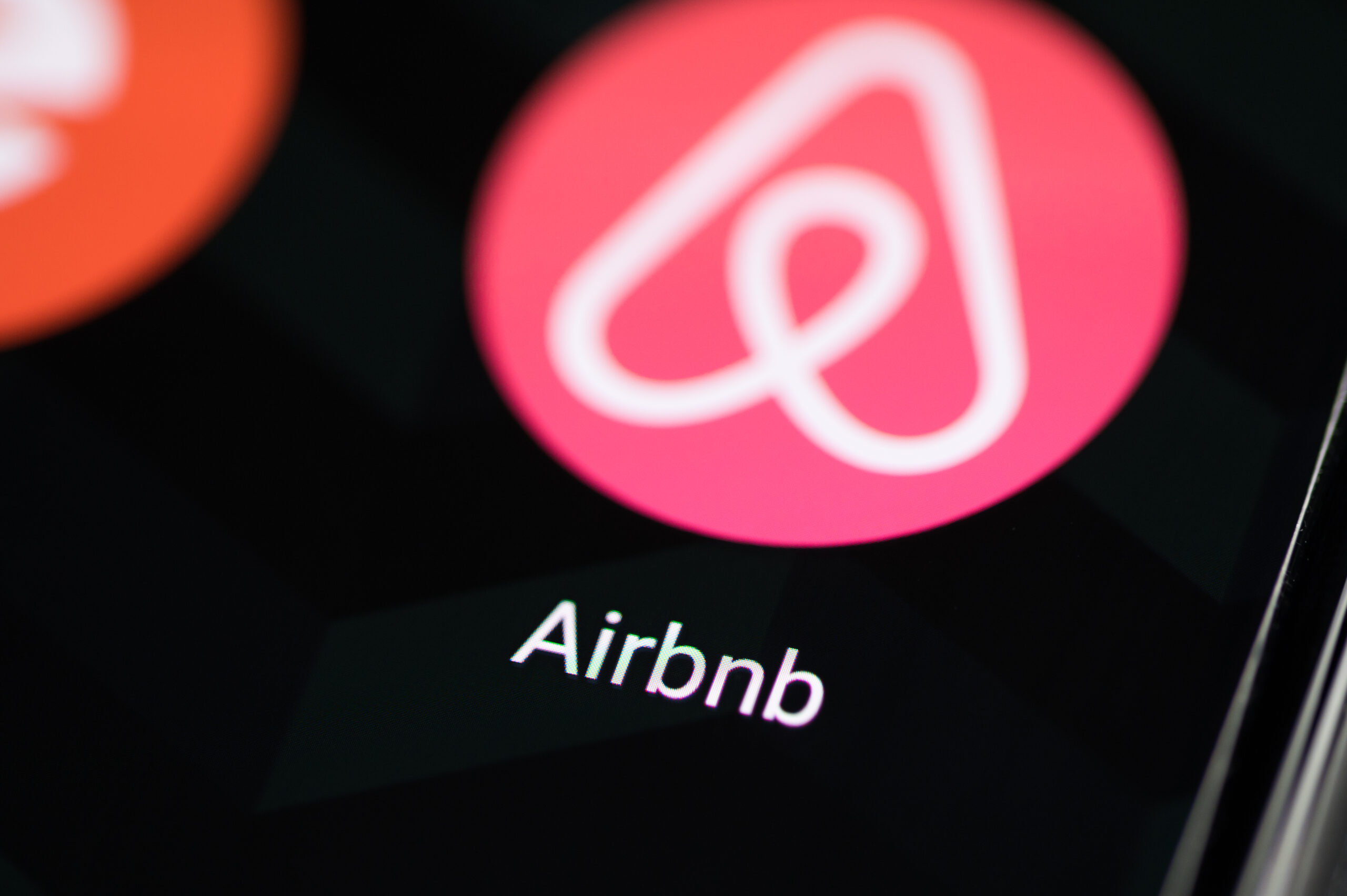Setting the Price
Pricing Approaches and Strategies
Pricing approaches can be broadly categorized into three main strategies: profit-oriented, competitor-oriented, and customer-oriented pricing. Each approach focuses on different factors to determine the optimal price for products or services.
Profit-Oriented Pricing
Profit-oriented pricing is a strategy that aims to maximize a company’s profits by focusing on the financial aspects of the business and its products. This approach is based on a simple principle: the price of a product or service should be set higher than the total cost of producing and selling it, ensuring that the company makes a profit on each sale.
The core idea behind profit-oriented pricing is the equation:
[latex]\text{Profit}=\text{Revenue}-\text{Cost}[/latex]
Companies using this strategy calculate their costs carefully and then add their desired profit margin to determine the selling price.
While this method ensures profitability on paper, it has some limitations. Customers generally do not care about a company’s costs, competitors may be able to undercut prices, and this approach can limit pricing flexibility in response to market changes.
Margin and Markup Pricing
Margin and markup pricing are two common approaches within profit-oriented pricing strategies. Both methods are used to determine selling prices based on costs, but they calculate the profit differently.
Margin Pricing
Margin pricing focuses on the profit as a percentage of the selling price. It is calculated using this formula:
[latex]\text{Margin}=(\text{Selling Price}-\text{Cost})/\text{Selling Price}[/latex]
The margin is expressed as a percentage of the selling price. To set a price using the margin method:
[latex]\text{Selling Price}=\text{Cost}/(1-\text{Desired Margin Percentage})[/latex]
Markup Pricing
Markup pricing, on the other hand, calculates the profit as a percentage of the cost. The formula for markup is:
[latex]\text{Markup}=(\text{Selling Price}-\text{Cost})/\text{Cost}[/latex]
To set a price using the markup method:
[latex]\text{Selling Price}=\text{Cost}(\text{Cost}\times\text{Desired Markup Percentage})[/latex]
Key Differences
The key differences between margin and markup pricing are:
- Base for Calculation: Margin uses the selling price as its base, while markup uses the cost.
- Resulting Percentages: For the same profit amount, the markup percentage will always be higher than the margin percentage.
- Ease of Use: Markup is often easier to calculate quickly, especially for businesses with varying costs.
Industry Application
Both methods are used in a wide range of sectors, but margin is often preferred for financial reporting and analysis because it directly relates to profitability ratios. Markup might be used more frequently in quick pricing decisions, especially in retail settings.
Example
Margin and Markup Pricing
Let’s say a hotel room costs $80 to maintain and operate per night, and the desired profit is $40.
Using Margin:
[latex]\text{Selling Price}=$120[/latex]
[latex]\text{Margin}=($120-$80)/$120=33.33\%[/latex]
Using Markup:
[latex]\text{Selling Price}= $120[/latex]
[latex]\text{Markup}=($120-$80)/$80=50\%[/latex]
As you can see, the same $40 profit results in different percentages depending on whether you use margin or markup.
Competitor-Oriented Pricing
Competitor-oriented pricing is a strategy where a company sets its prices primarily based on what competitors are charging. This approach requires a thorough understanding of the market and competitors’ offerings. There are three main ways to implement this strategy: matching, pricing above, or pricing below the competition.
Examples
Competitor-Oriented Pricing
Matching Competitor Prices: When a company matches competitor prices, they are essentially saying, “We’re just as good as our competitors.” However, this approach requires competing on other parts of the marketing mix (product, place, promotion) to differentiate the offering.
Example: A beach resort matches its competitors’ room rates but offers superior customer service and unique amenities to stand out.
Pricing Above Competition: Pricing above the competition can be effective, but it requires a clear advantage on some non-price element of the marketing mix. This could be superior quality, unique features, or strong brand reputation.
Example: A luxury eco-lodge charges higher rates than nearby accommodations, justifying the premium with its sustainable practices, exclusive location, and high-end amenities.
Pricing Below Competition: Pricing below the competition aims to increase sales volume with lower profit margins. This strategy is effective if a significant segment of the market is price-sensitive and the organization’s cost structure is lower than competitors’.
Example: A budget airline offers lower fares than full-service carriers, attracting price-sensitive travelers and compensating for lower margins with higher volume and reduced services.
The Risk: Price War
The major risk of competing primarily on price is the potential for a price war. This occurs when competitors continually lower their prices to undercut each other, potentially leading to unsustainable pricing levels and reduced profitability for all involved.
Customer-Oriented Pricing
Customer-oriented pricing is a strategy that focuses on the customer’s perspective rather than solely on costs or competitors. This approach recognizes that price is “what you think your product is worth to that customer at that time.” It is based on understanding the customer’s perceived value of the product or service and their willingness to pay.
Perceived Value and Willingness to Pay
Perceived value is the worth that a customer assigns to a product or service based on its perceived benefits and costs. This can vary greatly from customer to customer and even for the same customer at different times.
Willingness to pay is the maximum amount a customer is prepared to pay for a product or service. It is directly related to perceived value but also influenced by factors like budget constraints and alternatives available.
In tourism, hospitality, and leisure sectors, perceived value can be affected by factors such as:
- Quality of service
- Uniqueness of the experience
- Convenience
- Brand reputation
- Timing (e.g., peak vs. off-peak seasons)
Customer-oriented pricing aims to answer two critical questions:
- What is the highest price I can charge and still make the sale?
- Am I willing to sell at that price?
Examples
Customer-Oriented Pricing
Example 1: A beachfront hotel might charge higher rates during summer when customers perceive greater value in a beach vacation and are willing to pay more.
Example 2: A theme park might offer discounted evening tickets, recognizing that some customers perceive less value in a shorter visit but are willing to pay a reduced price.
Example 3: Perceived value and willingness to pay in different contexts. A common product that exemplifies significant price variation based on context is bottled water. While typically inexpensive in most retail settings, bottled water can become extremely costly in certain situations.

Price Variation in Bottled Water
Standard Retail Price: In grocery stores, convenience stores, or supermarkets, bottled water is generally affordable for most consumers. A standard 500ml bottle of water might cost anywhere from $1.00 to $2.00, depending on the brand and location.
High-Price Contexts: However, the price of bottled water can skyrocket in specific environments:
- Airports: After passing through security, bottled water prices often increase dramatically. A single bottle might cost $5 or more.
- Hotels: Mini-bar or room service water can be priced at a premium, sometimes reaching $5-$10 per bottle.
- Concerts and Sporting Events: Venues often charge inflated prices for bottled water, sometimes $4-$6 per bottle.
Price Variation Factors: The stark price difference is primarily due to:
- Captive markets
- Convenience premiums
- Exploitation of necessity in certain contexts
This pricing strategy, known as situational pricing or price discrimination, allows sellers to maximize profits based on consumers’ willingness to pay in different situations.
Segmented Pricing
Offer the right product to the right customer at the right time for the right price.
Customer-oriented pricing recognizes that different customers have varying perceptions of value and willingness to pay. This is then translated into a segmented pricing strategy, where different prices are charged to different customer segments for essentially the same product or service.
How is this possible?
Criteria for Effective Price Segmentation
To effectively use price segmentation, the following criteria must be met:
- Different groups (segments) of consumers must value the product differently:
- There should be clear differences in the perceived value of the product or service among different segments. This perception gap allows for price differentiation and justifies charging different prices to different segments. Different segments should respond differently to various marketing mix elements, especially price. The same product can have different values at different times, allowing for temporal price discrimination. Pricing can vary based on how much or how often a customer buys. If all segments react the same way to price changes, there’s no benefit in segmenting.
- Each segment must be identifiable and dealt with separately, with no crossover between segments (create fences between segments):
- The segments must be clearly distinguishable from each other. You should be able to identify which segment a customer belongs to based on observable characteristics or behaviors.
- One segment cannot sell their purchase to another segment (arbitrage):
- It should be difficult or impossible for customers in lower-priced segments to resell to those in higher-priced segments. This maintains the integrity of your segmentation strategy.
Example
Segmented Pricing in Movie Theatres

The same movie is shown to everyone, but prices differ for matinee vs. evening shows, weekdays vs. weekends, and different age groups or student status. The core product (the movie) is identical, but various factors justify the price differences, and customers generally accept this as a fair practice.
Evolution of Segmented Pricing[1][2][3]
Segmented pricing has since evolved through the following stages:
- Yield management
- Revenue management
- Dynamic pricing
Yield Management (1970s)
Yield management emerged in the airline industry in the 1970s and was later adopted by hotels and other sectors in the tourism industry.
Key Features:
- Focused on maximizing revenue for perishable inventory (e.g., airline seats and hotel rooms)
- Used historical data to predict demand and adjust prices accordingly
- Implemented different price tiers based on factors like booking time, season, or customer segment
Example
Yield Management
In the early 1970s, airlines began experimenting with “fenced” pricing strategies to maximize revenue and fill more seats on flights. A notable example of this was:
Discounted Advance Booking
Airlines offered discounts to passengers who booked their flights more than 21 days in advance[4]. This strategy allowed airlines to:
- Sell additional seats that might otherwise have gone empty.
- Attract price-sensitive customers who were willing to commit early.
- Maintain higher prices for last-minute bookings, often from business travelers.
Revenue Management (1980s–1990s)
Revenue management evolved from yield management, expanding its scope and sophistication.
Key Features:
- Broader focus on overall revenue optimization, not just yield
- Incorporated more data points and advanced forecasting techniques
- Began to consider the total customer value, including ancillary revenues
Examples
Revenue Management[5]
Marriott International
Marriott was among the first hotel chains to adapt airline-style revenue management to the hospitality industry in the late 1980s. Their approach included:
- Variable pricing for rooms based on demand
- Forecasting occupancy rates to optimize pricing
- Implementing stay restrictions (e.g., minimum night stays during peak periods)
National Car Rental
National Car Rental began implementing revenue management techniques in the late 1980s, focusing on:
- Dynamic pricing based on vehicle availability
- Optimizing fleet allocation across different locations
- Implementing length-of-rental restrictions during high-demand periods
Dynamic Pricing (Today)
Dynamic pricing is the modern evolution of yield management, enhanced by advanced technology and real-time data analysis.
Key Features:
- Prices change in real-time based on current market conditions, demand, and other factors
- Utilizes big data, AI, and machine learning to make pricing decisions
- Considers a wider range of factors including competitor prices, weather, events, and even individual customer behaviour.
Examples
Dynamic Pricing
Dynamic pricing has become increasingly sophisticated and widespread in recent years. Here are some notable recent examples[6].
Uber’s Surge Pricing
Uber continues to refine its dynamic pricing model, known as surge pricing:
- Adjusts ride fares in real-time based on factors like demand, traffic conditions, and driver availability.
- Uses AI algorithms to predict demand fluctuations and optimize pricing.

Amazon’s AI-Driven Pricing
Amazon has further advanced its dynamic pricing strategy:
- Changes product prices millions of times daily using AI algorithms.
- Considers factors such as competitor pricing, demand, and consumer behaviour.

Airbnb’s Smart Pricing
Airbnb offers hosts a dynamic pricing tool called “Smart Pricing”:
- Automatically adjusts listing prices based on factors like location, booking dates, property size, and local demand.
- Hosts using price recommendations within 5% of the suggested range are nearly four times more likely to get booked.

Delta Airlines
Delta Airlines incorporates AI to refine its pricing strategies:
- Analyzes historical data and market trends to optimize ticket prices.
- Adjusts prices based on factors such as demand, seasonality, and competitor pricing.

The Evolution
- Segmented Pricing: Laid the foundation by recognizing different customer segments.
- Yield Management: Introduced time-based pricing and demand forecasting.
- Revenue Management: Expanded to consider total customer value and more sophisticated forecasting.
- Dynamic Pricing: Incorporates real-time data and advanced analytics for more precise and responsive pricing.

Impact on the Tourism, Hospitality, and Leisure Sectors
This evolution has allowed for more sophisticated pricing strategies that can:
- Maximize revenue and occupancy rates
- Respond quickly to changes in demand
- Offer personalized pricing to individual customers
- Balance supply and demand more effectively
However, it also presents challenges:
- Requires significant technological investment
- Can be complex to implement and manage
- May raise concerns about fairness and transparency among customers
“How Do Airlines Price Tickets? | CNBC Explains” [5:55 min] by CNBC International[7]
If you are using a printed copy, you can scan the QR code with your digital device to go directly to the video: How Do Airlines Price Tickets? | CNBC Explains

“Retailers Adopt ‘Dynamic Pricing” [2:01 min] by CBS New York[8]
If you are using a printed copy, you can scan the QR code with your digital device to go directly to the video: Retailers Adopt ‘Dynamic Pricing

Media Attributions
- Figure 1: “Water, Bottle, Bottle of water” by Dmitriy (2020), via Pixabay is used under the Pixabay content license.
- Figure 2: “Ai Generated Movie Theater Cinema Hall” by Frank Rietsch (2024), via Pixabay is used under the Pixabay content license.
- Figure 3: “Uber app icon on smartphone screen” by Ivan Radic (2021), via Flickr, is used under a CC BY 2.0 license.
- Figure 4: “Amazon-logo” by Dia (2013), via Flickr, is used under a CC BY-NC-ND 2.0 license.
- Figure 5: “Airbnb app icon on smartphone screen” by Ivan Radic (2021), via Flickr, is used under a CC BY 2.0 license.
- Figure 6: “A Passenger Plane Flying in the Sky” by Jeffry S.S. (2021), via Pexels, is used under the Pexels license.
- Figure 7: “Big Data Analytics” by Gabriel Lasso (2019), via Flickr, is in the public domain.
- Yeoman, I.S., & McMahon-Beattie, U. (2017). The turning points of revenue management: a brief history of future evolution. Journal of Tourism Futures, 3(1), 66–72. https://doi.org/10.1108/JTF-11-2016-0040 ↵
- Kopalle, P. K., Pauwels, K., Akella, L. Y., & Gangwar, M. (2023). Dynamic pricing: Definition, implications for managers, and future research directions. Journal of Retailing, 99(4), 580–593. https://doi.org/10.1016/j.jretai.2023.11.003 ↵
- Neubert, M. (2022). A systematic literature review of dynamic pricing strategies. International Business Research, 15(4). https://doi.org/10.5539/ibr.v15n4p1 ↵
- Stuart-Hill, T. (2015, April 6). Revenue management: An overview on past, present and future. Revenue Matters. https://revenuematters.com/revenue-management-an-overview-on-past-present-and-future/ ↵
- Revenue management. (2024, October 10). In Wikipedia. https://en.wikipedia.org/w/index.php?title=Revenue_management&oldid=1250361964 ↵
- Mailmodo (2024, July 21). 6 dynamic pricing examples from different industries. https://www.mailmodo.com/guides/dynamic-pricing-examples/ ↵
- CNBC International. (2018, August 2). How do airlines price tickets? | CNBC explains [Video]. YouTube. https://youtu.be/EhhLXZB3kRw?si=E3w0NhL_hzx9hFcp ↵
- CBC New York. (2017, December 1). Retailers adopt 'dynamic pricing' [Video]. YouTube. https://youtu.be/Jfym-IVnEak?si=9RSGxCfJPk7ev28u ↵
A strategy focused on maximizing profits by setting prices above total production and selling costs, often calculated using margin or markup methods.
A pricing method where profit is expressed as a percentage of the selling price, calculated as:
Margin=(Selling Price−Cost)/Selling Price.
A pricing method where profit is expressed as a percentage of the cost, calculated as:
Markup=(Selling Price−Cost)/Cost
A strategy where prices are set based on competitors’ pricing, either matching, pricing above, or pricing below competitors.
A competitive situation where businesses continually lower their prices to undercut each other, potentially leading to unsustainable profitability levels.
A strategy focusing on the customer's perceived value and willingness to pay rather than solely on costs or competitors’ prices.
Charging different prices for the same product or service based on customer segments, timing, or purchase volume to maximize revenue.
A pricing approach used in industries like airlines and hotels to maximize revenue by adjusting prices based on demand forecasts and inventory availability.
An evolved form of yield management that incorporates broader data points and advanced forecasting techniques to optimize total customer value.
Real-time price adjustments based on factors like demand, competition, and customer behavior — often leveraging big data and AI technologies.

